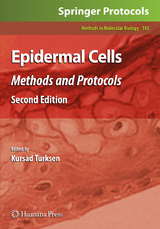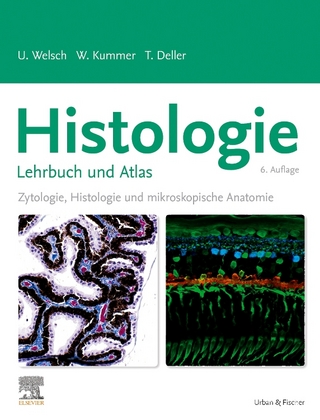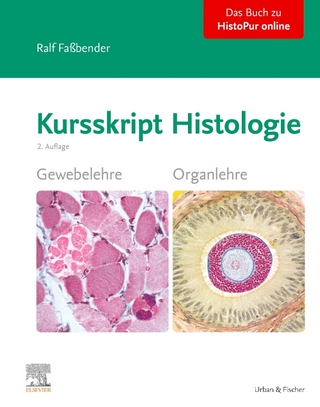Epidermal Cells
Humana Press Inc. (Verlag)
978-1-60761-379-4 (ISBN)
State-of-the-art and highly practical, Epidermal Cells: Methods and Protocols, Second Edition offers experienced and novice investigators alike an invaluable collection of readily reproducible techniques designed to broaden not only our understanding of the biology of epidermal cells, but also their utility in normal tissue homeostasis and regenerative medicine applications.
Isolation of Adult Mouse Stem Keratinocytes Using Magnetic Cell Sorting (MACS).- Functional Investigations of Keratinocyte Stem Cells and Progenitors at a Single-Cell Level Using Multiparallel Clonal Microcultures.- Growth and Stratification of Epithelial Cells in Minimal Culture Conditions.- Matched Cultures of Keratinocytes and Fibroblasts Derived from Normal and NER-Deficient Mouse Models.- Establishment of Spontaneously Immortalized Keratinocyte Lines from Wild-Type and Mutant Mice.- Study of Epidermal Differentiation in Human Keratinocytes Cultured in Autocrine Conditions.- Directed Differentiation of Human Embryonic Stem Cells to Epidermal Progenitors.- Expression and Analysis of Exogenous Proteins in Epidermal Cells.- Using siRNA Knockdown in HaCaT Cells to Study Transcriptional Control of Epidermal Proliferation Potential.- RNA Interference in Keratinocytes and an Organotypic Model of Human Epidermis.- Scanning for Transcription Factor Binding by a Variant EMSA.- Chromatin Immunoprecipitation for Identifying Transcription Factor Targets in Keratinocytes.- Gene Expression Profiling of Mouse Epidermal Keratinocytes.- Analysis of Tissue-Specific Gene Expression Using Laser Capture Microdissection.- Comprehensive Transcriptional Profiling of Human Epidermis, Reconstituted Epidermal Equivalents, and Cultured Keratinocytes Using DNA Microarray Chips.- Molecular Profiling of the Epidermis: A Proteomics Approach.- Detection of Gene Expression in Embryonic Tissues and Stratified Epidermis by In Situ Hybridization.- Embryonic Mammary Anlagen Analysis Using Immunolabelling of Whole Mounts.- Whole-Mount Assays for Gene Induction and Barrier Formation in the Developing Epidermis.- Tetracycline-Regulated Gene Expression in Transgenic Mouse Epidermis.- A Versatile Murine 3D Organotypic Model to Evaluate Aspects of Wound Healing and Epidermal Organization.- Optical and Biochemical Dissection of Connexin and Disease-Linked Connexin Mutants in 3D Organotypic Epidermis.- Cytokine Release in Tissue-Engineered Epidermal Equivalents After Prolonged Mechanical Loading.- Three-Dimensional Human Tissue Models of Wounded Skin.- In Vivo Transplantation of Genetically Modified Mouse Embryonic Epidermis.- A Transplant Model for Human Epidermal Skin Regeneration.- Identification of Epithelial Stem Cells In Vivo and In Vitro Using Keratin 19 and BrdU.- Isolation and Culture of Hair Follicle Pluripotent Stem (hfPS) Cells and Their Use for Nerve and Spinal Cord Regeneration.- Limiting Dilution Analysis of Murine Epidermal Stem Cells Using an In Vivo Regeneration Assay.
| Reihe/Serie | Methods in Molecular Biology ; 585 |
|---|---|
| Zusatzinfo | 29 Illustrations, color; 56 Illustrations, black and white; XVI, 446 p. 85 illus., 29 illus. in color. |
| Verlagsort | Totowa, NJ |
| Sprache | englisch |
| Maße | 193 x 260 mm |
| Themenwelt | Studium ► 1. Studienabschnitt (Vorklinik) ► Histologie / Embryologie |
| Naturwissenschaften ► Biologie ► Mikrobiologie / Immunologie | |
| Naturwissenschaften ► Biologie ► Zellbiologie | |
| ISBN-10 | 1-60761-379-4 / 1607613794 |
| ISBN-13 | 978-1-60761-379-4 / 9781607613794 |
| Zustand | Neuware |
| Haben Sie eine Frage zum Produkt? |
aus dem Bereich




